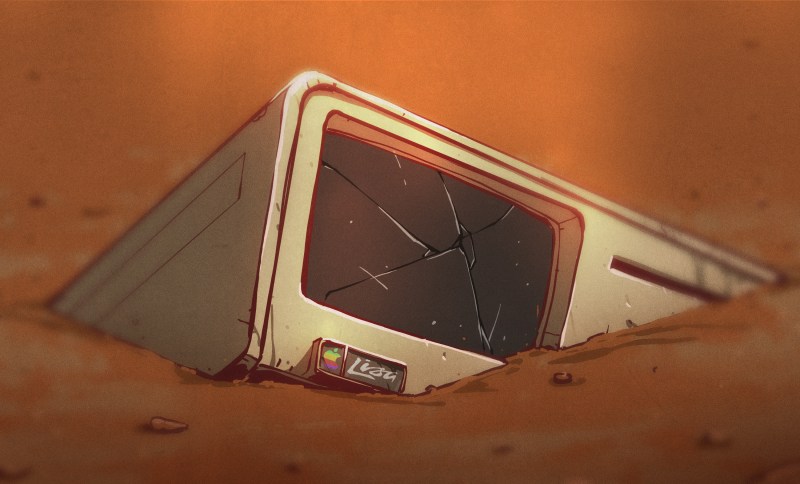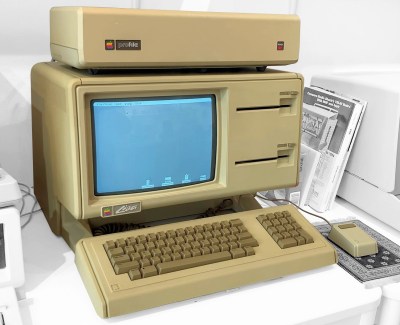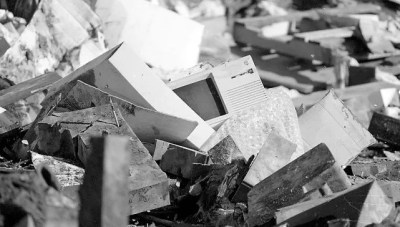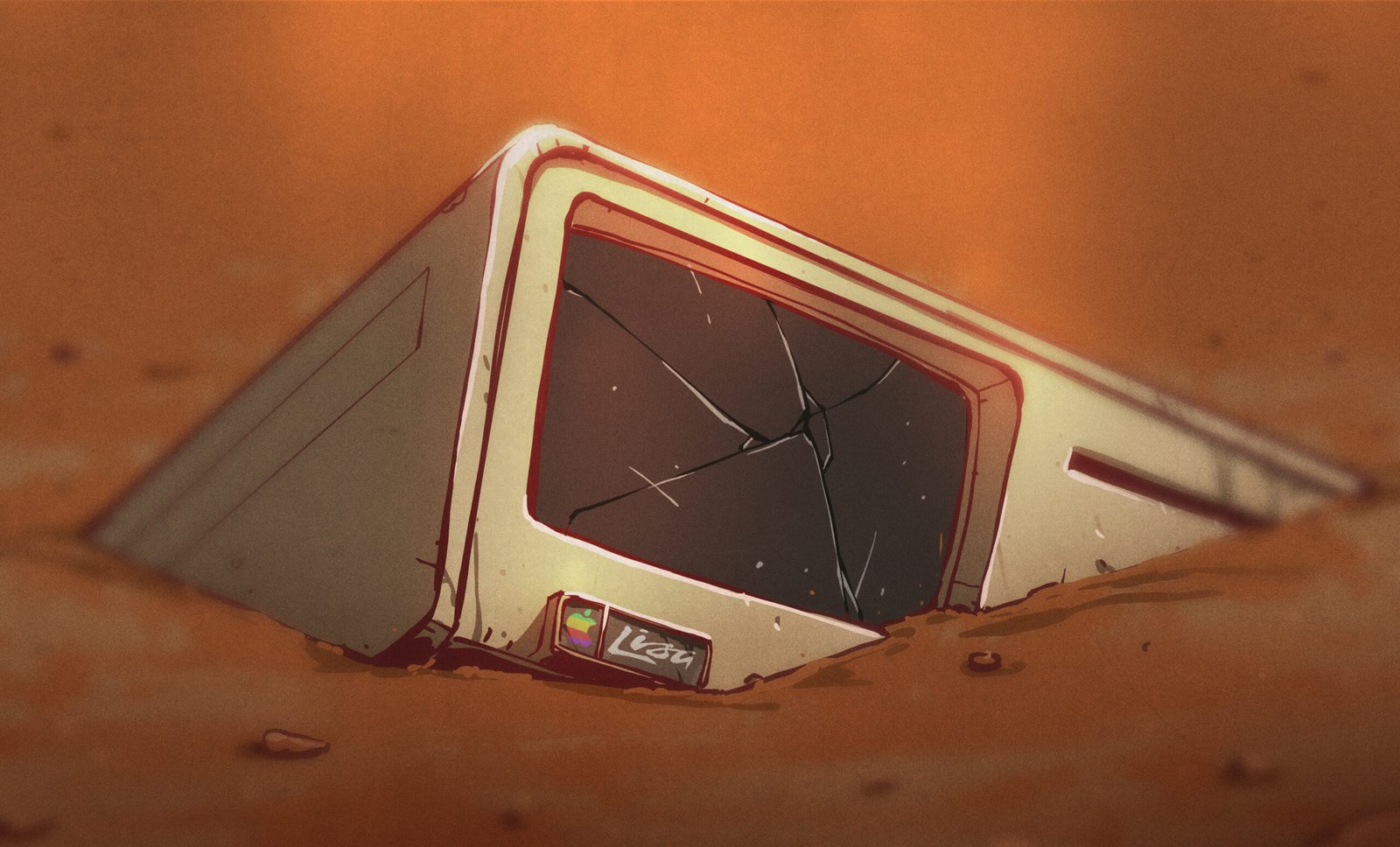
In 1983, the Lisa was supposed to be a barnburner. Apple’s brand-new computer had a cutting edge GUI, a mouse, and power far beyond the 8-bit machines that came before. It looked like nothing else on the market, and had a price tag to match—retailing at $9,995, or the equivalent of over $30,000 today.
It held so much promise. And yet, come 1989, Apple was burying almost 3,000 examples in a landfill. What went wrong?
Promise
The Lisa computer, released in 1983, was Apple’s first attempt at bringing a graphical user interface to the masses. The name was officially an acronym for “Local Integrated Software Architecture,” though many believed it was actually named after Steve Jobs’ daughter. In any case, the Lisa was groundbreaking in ways that wouldn’t be fully appreciated until years later.

The Lisa stepped away from the long-lived 6502 CPU that had powered the Apple II line. Instead, it relied upon the exciting new Motorola 68000, with its hybrid 16-bit/32-bit architecture and fast 5 MHz clock speed. The extra power came in handy, as the Lisa was to be one of the first retail computers to be sold with a graphical user interface—imaginatively titled Lisa OS. Forget command lines and character displays—the Lisa had icons and a mouse, all rendered on a glorious 720 x 364 monochrome monitor with rectangular pixels. Adopters of Apple’s new rectangular machine also got twin 5.25-inch double-sided floppy drives, and the Lisa included three expansion slots and a parallel port for adding additional peripherals.
The Lisa seemed to offer a great leap forward in capability, but the same could be said of its price. At launch in 1983, it retailed at $9,995, equivalent to over $30,000 in 2025 dollars. The price was many multiples beyond what you might pay for an IBM PC, making it a tough pill to swallow even given what the Lisa had to offer. The GUI might have been cutting-edge, too, but the implementation wasn’t perfect. The Lisa had a tendency to chug.

There was also a further problem. Apple’s very own Steve Jobs may have worked on the Lisa, but he was kicked off the project in 1981, prior to launch. Jobs then jumped ship to the nascent Macintosh development effort, which was initially intended to be a low-cost text-based computer retailing for under $1,000. Jobs swiftly redirected the Macintosh project to make it a GUI-based machine, while retaining the intention to come in at a far more affordable price-point than the exorbitantly-priced Lisa.
The result was damaging. Just as the Lisa was launching, rumors were already swirling about Apple’s upcoming budget machine. When the Macintosh hit the market in 1984, it immediately blitzed the Lisa in sales. Both machines had a mouse and a GUI, and the Macintosh even had a more forward-looking 3.25-inch floppy drive. True, the Mac wasn’t anywhere near as beefy as the Lisa; most notably, it had just 128K of RAM to the 1MB in Apple’s flagship machine. Ultimately, though, the market voted Mac—perhaps unsurprising given it retailed at $2,495—a quarter of the Lisa’s debut price. Come May, Apple had sold 70,000 units, thanks in part do a legendary commercial directed by the Ridley Scott. Meanwhile, it took the Lisa a full two years to sell just 50,000.
Apple tried to make the best of things. The Lisa was followed by the Lisa 2, and it was then rebadged as the Macintosh XL. Ultimately, though, it would never find real purchase in the marketplace, even after severe price cuts down to $3,995 in 1985. By 1986, it was all over—Apple discontinued the Lisa line.

The following years weren’t kind. A bunch of 5000 Lisas ended up being bought by third-party company Sun Remarketing, which upgraded them and sold them on as “Lisa Professionals” and “Macintosh Professionals.” However, cut to 1989, and Apple had a better idea. The Lisas were going to a dump in Logan, Utah.
The story would end up making the news, with The Herald Journal reporting on what was then an astounding story. 2,700 brand new computers were being sent to straight to landfill. This was particularly shocking in the era, given that computers were then still relatively novel in the marketplace and sold for an incredibly high price.
The reason behind it was pure business. “Right now, our fiscal year end is fast approaching and rather than carrying that product on the books, this is a better business decision,” Apple spokesperson Carleen Lavasseur told the press. Apple was able to gain a tax write off the computers, and it was estimated it could reclaim up to $34 for every $100 of depreciated value in the machines which were now considered obsolete. Apple paid $1.95 a yard for over 880 cubic yards of space at the landfill to dump the machines. Other reports on the event noted that guards apparently stood on site to ensure the machines were destroyed and could not be recovered.
It’s a story that might recall you of Atari’s ET, another grand embarrassment covered up under a pile of trash. Sometimes, products fail, and there’s little more to do than call the trucks and all them away. The Apple Lisa is perhaps one of the nicer machines that’s ever happened to.
This articles is written by : Nermeen Nabil Khear Abdelmalak
All rights reserved to : USAGOLDMIES . www.usagoldmines.com
You can Enjoy surfing our website categories and read more content in many fields you may like .
Why USAGoldMines ?
USAGoldMines is a comprehensive website offering the latest in financial, crypto, and technical news. With specialized sections for each category, it provides readers with up-to-date market insights, investment trends, and technological advancements, making it a valuable resource for investors and enthusiasts in the fast-paced financial world.
